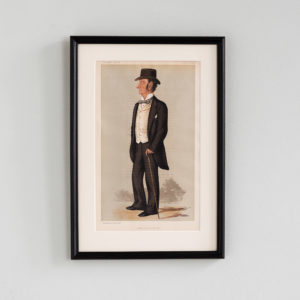4 items found
Page 1 of 1
-
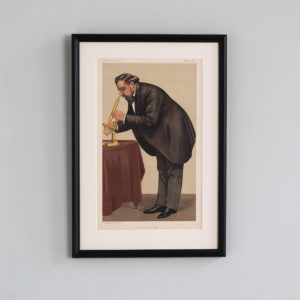
Mr. Frank Crisp,
£195Mr. Frank Crisp,
Framed Chromolithograph by Spy (Leslie Ward) depicting Sir Frank Crisp, 1st Baronet. Lawyer, forensic scientist, microscopist and horticulturalist. The owner of Friar Park, Henley-on-Thames, lately the residence of the Beatle George Harrison, he also drew up the contract for the cutting of the Cullinan Diamond in Amsterdam by Jospeh Asscher in 1893.£195 -
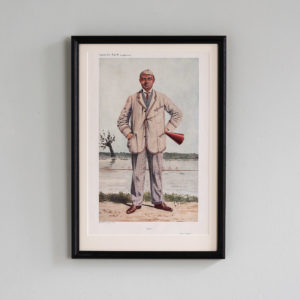
Bill,
£180Bill,
A framed chromolithograph by ELF picturing Robert Henry Foster, lawyer, author, poet, oarsmen and pioneering Romano-British archaeologist. His excavations at Roman Corbridge on Hadrian's Wall were seminal in the fledgling field of British archaeology. He wrote widely about Hadrian's Wall and the Roman presence in his native Northumberland. A keen oarsman, he rowed in the first boat of his college's Lady Margaret Boat Club and in the crew sent to Henley in 1888, winning both the Thames cup and Ladies plate. He later became joint secretary of the Thames Rowing Club in 1892. Starting out with a legal career in mind, he was called to the Bar in 1892, having been McMahon Law Student the year before. However, his writing soon took precedence, to be joined by his archaeological interests.£180 -
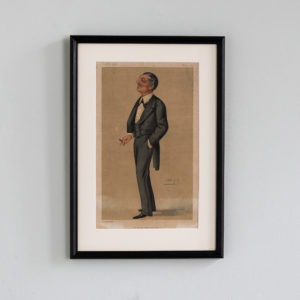
In His Military Capacity,
£170In His Military Capacity,
Framed Chromolithograph by SPY (Leslie Ward) depicting Mr Montagu Williams QC, teacher, British Army officer, actor, playwright, barrister and magistrate. His succesful defence of Mr John Young in his manslaughter trial, after the death of an opponent in the boxing ring, established a legal precedent around the sport.£170
Featured Items
-
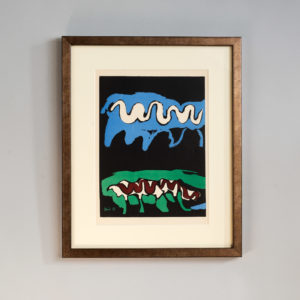
The Four Elements, Earth by Francisco Bores, Verve Vol. 1 / No. 1.
£600The Four Elements, Earth by Francisco Bores, Verve Vol. 1 / No. 1.
The Verve Review was a purposefully luxurious. It ran from 1937 to 1960, but with only 38 editions available, due to the high degree of design and editorial work dedicated to each issue. Each edition contained unique lithographic prints, commissioned by the editor, and each cover a double-page lithograph elaborated by one of the artists contained within. It was the brainchild of its editor Stratis Eleftheriades, a Greek National who moved to Paris in the early thirties to take part in the growing Modernist movement, writing under the name of Teriade.£600 -

The Dance, by Henri Matisse, Jan – March 1939 / No. 4.
£1,200The Dance, by Henri Matisse, Jan – March 1939 / No. 4.
The Verve Review was a purposefully luxurious. It ran from 1937 to 1960, but with only 38 editions available, due to the high degree of design and editorial work dedicated to each issue. Each edition contained unique lithographic prints, commissioned by the editor, and each cover a double-page lithograph elaborated by one of the artists contained within. It was the brainchild of its editor Stratis Eleftheriades, a Greek National who moved to Paris in the early thirties to take part in the growing Modernist movement, writing under the name of Teriade.£1,200 -
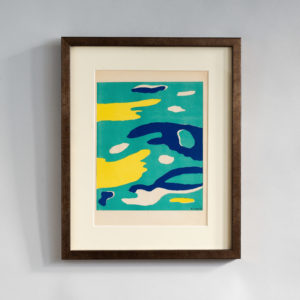
The Four Elements, Water by Fernand Leger, Verve Vol. 1 / No. 1.
£600The Four Elements, Water by Fernand Leger, Verve Vol. 1 / No. 1.
The Verve Review was a purposefully luxurious. It ran from 1937 to 1960, but with only 38 editions available, due to the high degree of design and editorial work dedicated to each issue. Each edition contained unique lithographic prints, commissioned by the editor, and each cover a double-page lithograph elaborated by one of the artists contained within. It was the brainchild of its editor Stratis Eleftheriades, a Greek National who moved to Paris in the early thirties to take part in the growing Modernist movement, writing under the name of Teriade.£600 -
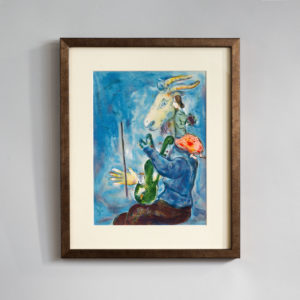
Printemps by Marc Chagall, Verve Vol. 1 / No. 3.
£800Printemps by Marc Chagall, Verve Vol. 1 / No. 3.
The Verve Review was a purposefully luxurious. It ran from 1937 to 1960, but with only 38 editions available, due to the high degree of design and editorial work dedicated to each issue. Each edition contained unique lithographic prints, commissioned by the editor, and each cover a double-page lithograph elaborated by one of the artists contained within. It was the brainchild of its editor Stratis Eleftheriades, a Greek National who moved to Paris in the early thirties to take part in the growing Modernist movement, writing under the name of Teriade.£800

